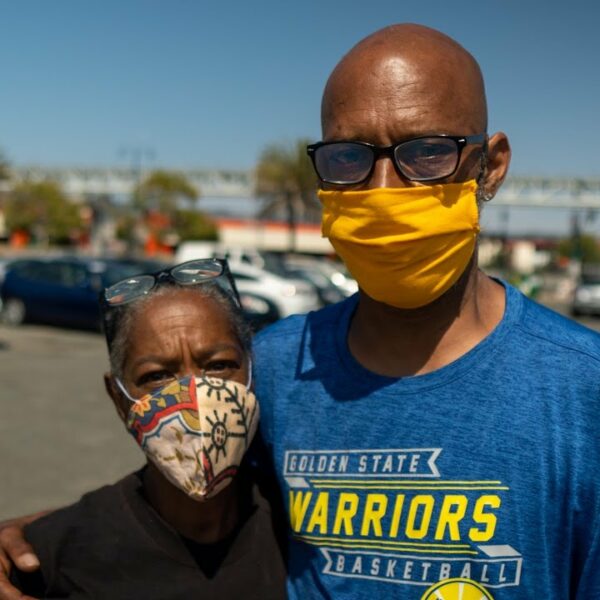Inflation continues to be a hot topic as the cost of nearly everything continues to climb.
While wealthy Americans have financial safeguards they can rely on, low-income Americans end up bearing the highest costs during times of persistent inflation. The wealthy can often rely on investment products like a 401(k) or their home’s equity to pad their income. But the rising cost of food, rent, and utilities disproportionately trickles down to low-income earners where there is little room for higher prices in already tight budgets.
One way inflation can increase the risk of homelessness is that it increases the cost of necessity items like clothes, food, and shelter. A recent analysis of economic data by the Washington Post found that low-income Americans spend an outsized portion of their money on these items compared to their wealthier counterparts.
And the growing cost of items like food and utilities is still at the high end of the distribution. The latest data from the Bureau of Labor Statistics shows that the cost of food rose by an average of seven percent nationwide in January. Meanwhile, utilities such as electricity and natural gas increased by 10.7 percent and 23.9 percent, respectively.
These rising costs are exacerbating an already tenuous situation for many low-income earners. The number of households experiencing food and housing instability is growing nationwide.
According to the latest Household Pulse Survey from the Census Bureau, nearly 5.8 million households with children reported “often not having enough food to eat” between January 26 and February 7. That total has more than doubled over the last year.
Similarly, 1.4 million renter households reported being “very likely” to be evicted within the next two months. This total has remained relatively unchanged since 2021 despite the relief programs available.
Inflation can also increase homelessness by putting upward pressure on rents as landlords face higher maintenance and carrying costs for their properties. According to research by Harvard’s Joint Center for Housing Studies (JCHS), the average rent in the 100 largest metro areas across the U.S. rose by an average of 11 percent as of September 2021.
Alexander Hermann, a senior research analyst at JCHS, said the rising home prices seen during the pandemic also helped push rents higher. Across the country, home prices grew by an average of 18.5 percent, with many metros outpacing that target.
“Rising home prices and the limited inventory of homes for sale have prevented many potential homebuyers from becoming homeowners,” Hermann said. “Instead, these middle- and higher-income households are more likely to turn to rental housing or remain in their rentals longer than planned.”
The mismatch between housing supply and demand has created a perfect storm for many low-income earners. In most cases, accelerating the pace of homebuilding would level out the rising home price appreciations. However, the price of homebuilding materials such as wood, copper, and PVC, have all been impacted by inflation. This makes it difficult for developers to build affordable housing.
It’s not just individuals and families bearing the brunt of inflation either.
Nonprofits and service organizations dedicated to helping the homeless community also struggle to deal with higher costs. One organization, Keystone Mission in Wilkes-Barre, Pennsylvania, told NBC News that it is struggling to afford a new front door for their new transitional shelter that was ordered months ago.
Not only did the price of the door increase by almost $4,000, but Justin Behrens, the organization’s chief executive, said that the hardware to install it wasn’t even in stock anymore. On top of that, Behrens said they haven’t been able to source doorknobs or baseboards, further delaying the shelter’s opening. So far, the project is four months behind schedule, which is a long time for people sleeping on the streets to wait.
The song remains the same in Tulare County, California, where the area’s skyrocketing rental market is hindering the county’s homeless resolution efforts. One organization called the Kings Tulare Homeless Alliance has been trying to dispense its 117 housing vouchers. Still, the rising rents have made it difficult to find a unit within the budget.
Miguel Perez, who runs the Alliance, said the rising rents have led to 41 people being denied housing. So far, the Alliance has successfully placed only 11 voucher recipients.
“The dynamics of the rental market and everything that’s happened in the last 24 months—it’s unlike anything we’ve seen before in this area,” Perez said.
How You Can Help
The pandemic proved that we need to rethink housing in the U.S. It also showed that aid programs work when agencies and service organizations receive sufficient funds and clear guidance on spending aid dollars.
Contact your officials and representatives. Tell them you support keeping many of the pandemic-related aid programs in place for future use. They have proven effective at keeping people housed, which is the first step to ending homelessness once and for all.












